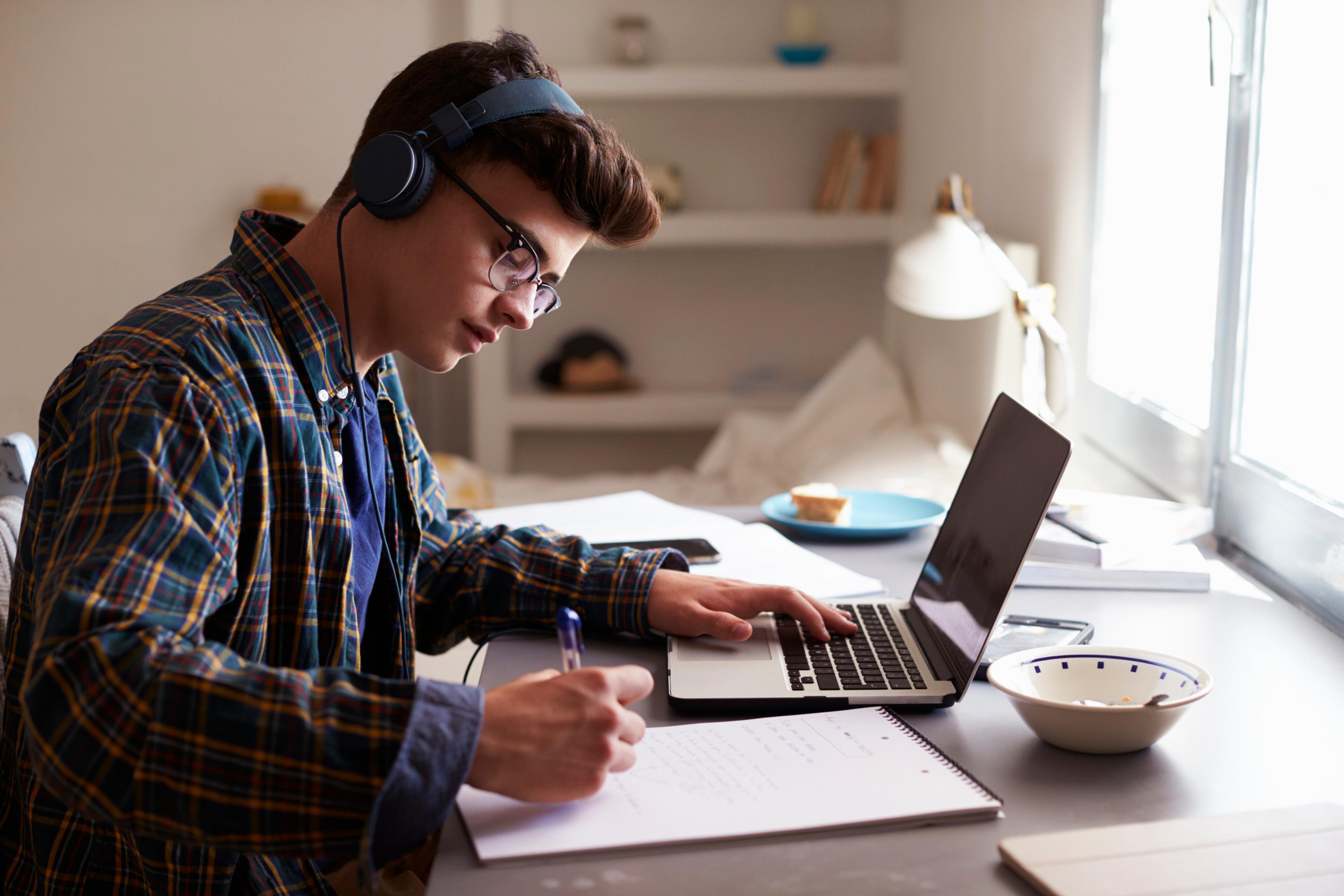Screen Time at School: How to Keep Students’ Eyes Healthy

Maria Cassel
| 3 min read
Maria Cassel is a corporate communications intern at...

There is no doubt about it, kids are spending more time online than ever before. Since the pandemic, kids have become accustomed to online games, social activities and more. Furthermore, kids are spending more time doing their schoolwork online. School activities online have become a norm for most kids.
Things such as pre-recorded lectures, digital articles to read and writing papers on computers all increase your child’s daily screen time. This increase in screentime for school might be having a negative effect on their overall eye health.
Even before the pandemic, digital schoolwork was on the rise. In 2019, 59% of teens reported using their computers daily for online schoolwork, as compared to 2015, when only 29% of teens used their computers daily for online schoolwork. Furthermore, in the year 2020, 81% of parents reported that their children used screens for up to five hours a day. As more assignments go paperless, kids are putting in hours on the computer to complete their schoolwork. Schoolwork requires kids to focus on their computer screen for an extended period.
This screen usage, in addition to any games or social activities your kids might be utilizing a screen for, can affect your child’s eye health.
Screens can cause many eye issues, the first being Computer Vision Syndrome. Looking at the computer screen makes your eyes focus and work harder. Those who spend more than two hours daily looking at a computer screen are at higher risk for Computer Vision Syndrome.
Symptoms of Computer Vision Syndrome
- Eyestrain
- Headaches
- Blurred Vision
- Dry Eyes
Furthermore, increased screentime can increase your child’s risk of developing myopia. Myopia, also known as nearsightedness, can create difficulty to see objects far away. Screens are typically held closer to the face and require more effort to read due to the backlighting and the screen contrast. In the year 2020, the prevalence of myopia in children aged six to eight significantly increased as compared to previous years. This was due to the great increase in screen usage.
Although doing schoolwork online can be productive, it is also important to understand the drawbacks of spending hours online. You must implement offline activities into your child’s schedule to prioritize your child’s eye health. Although you might not be able to limit their online schoolwork, it is important to take it into account when you are setting screen time restrictions for your child.
Guidelines and recommendations for limiting screen time
- For children ages 2-5, it is recommended to have no more than one hour of screen time per day.
- For children above age 6, it is recommended to set healthy screen time habits, including limiting media consumption and taking frequent breaks for screens.
- Here are some recommendations for managing online schoolwork and screen usage.
- Refrain from using screens 30-60 minutes before bedtime.
- Utilize the BLINK 20-20-20 Rule. Every twenty minutes, focus on an object twenty feet away, for twenty seconds to reset and refocus the eyes.
- Keep devices at least an arm’s length away from your child’s face.
- Take frequent breaks and get outside. Outdoor activities are proven to reduce the risk of developing myopia.
Related blogs:
- The Real Impact of Blue Light on Your Eyes
- How Too Much Sitting and Inactivity Impacts Mental Health
- Constantly Scrolling Social Media? Here’s why you Should Take a Break
Photo credit: Getty Images





